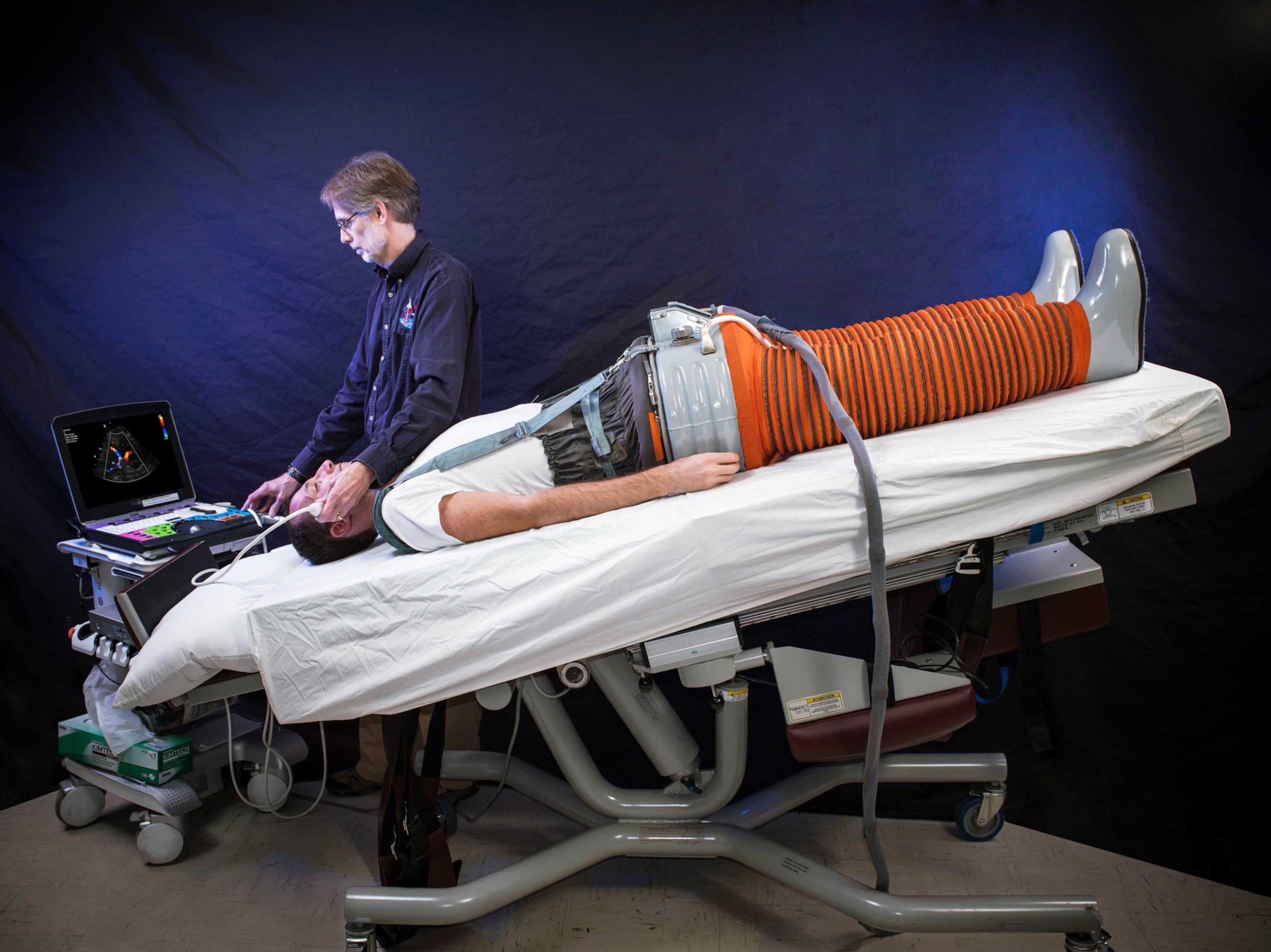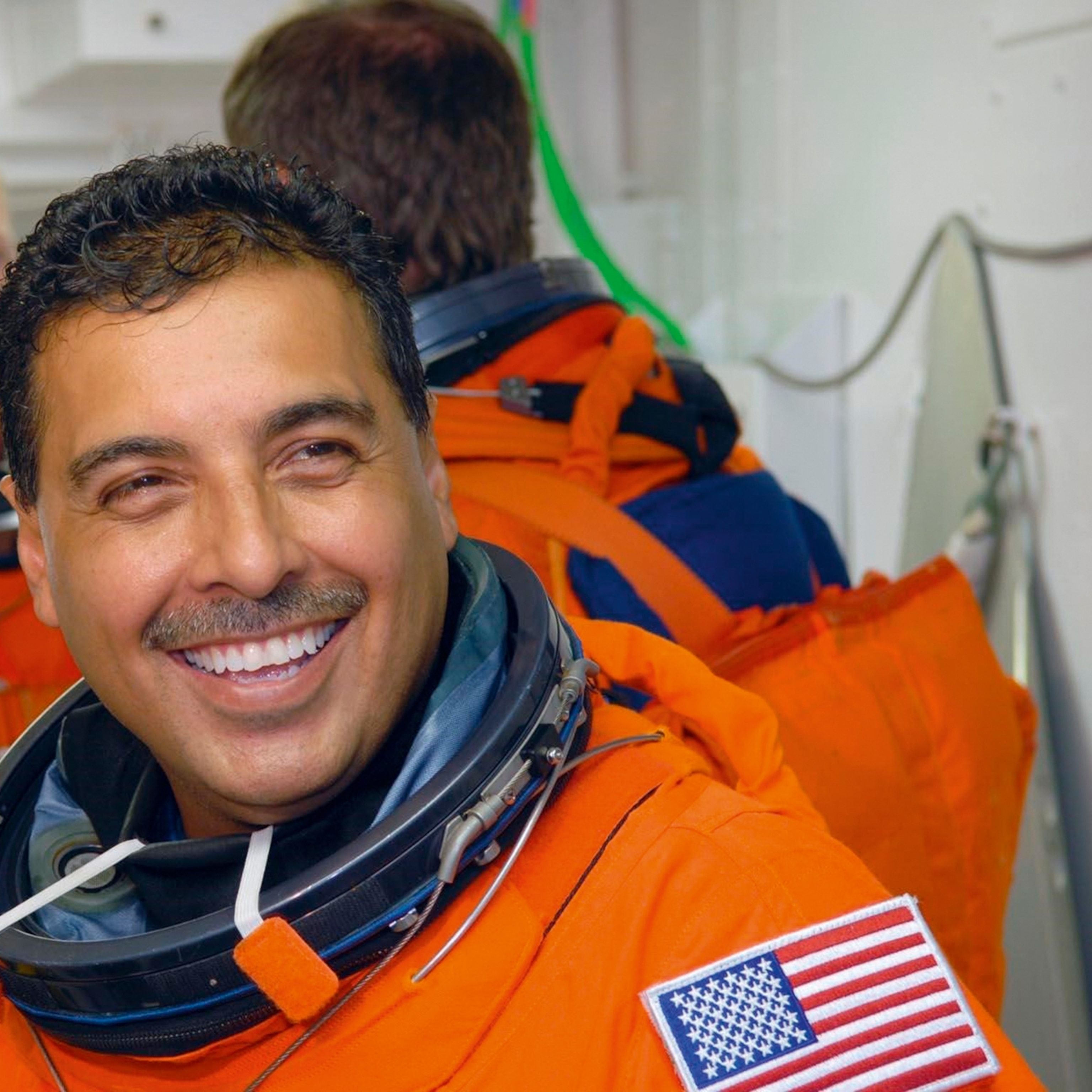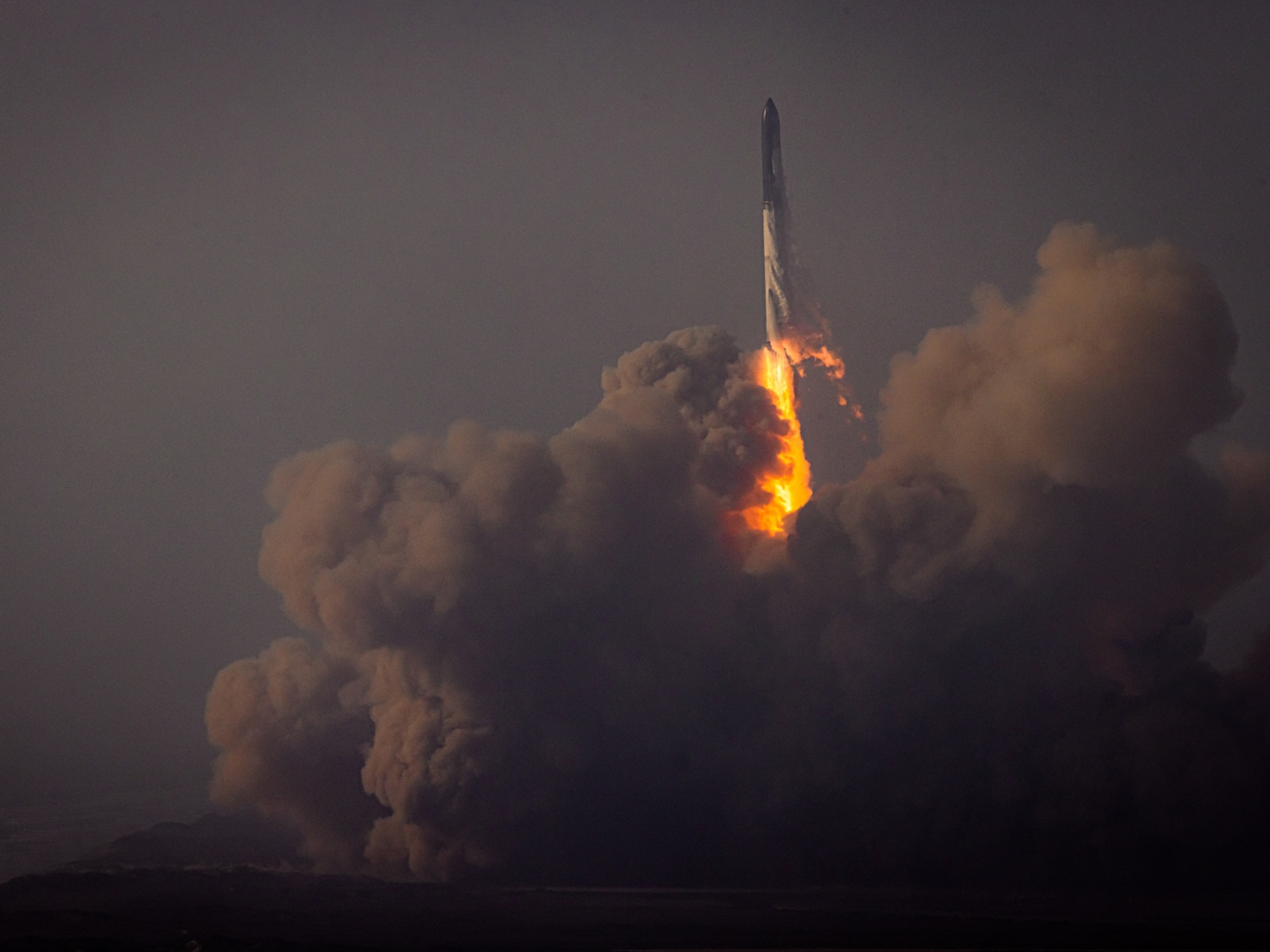Astronauts are more likely to get sick while in space. Here's why.
Genetic and physiological changes while in microgravity could have health implications for those in space—and even back on Earth.

Life in space is a huge adjustment. Besides orbiting the planet 250 miles above Earth’s surface, astronauts are snatched away from familiar anchors such as the daily rhythms of sunrise and sunset, the comforting presence of family, and the constant downward tug of gravity.
These changes aren’t just disorienting psychologically—space travel also causes massive physiological shifts. Chief among them is a shift in fluids from the lower body to the trunk and head while the astronauts float in microgravity. This can lead to anemia, eye problems, blood pressure changes, and immune dysfunction. Every organ system is impacted, detailed measurements of astronauts during training and on space missions show.
A new study published in Frontiers in Immunology by Odette Laneuville, a molecular biologist at the University of Ottawa, and her team tracked how these changes affected the immune systems of 14 astronauts during their sojourns aboard the International Space Station. The study found genetic changes indicating a drop in immune function within days of arrival at the ISS, and a subsequent return to baseline several months after they arrived back on Earth.

The results show how the immune system rapidly adapts to microgravity and gradually returns to normal. Scientists can use this kind of information to better understand everything from infectious disease threats during space travel to how injuries might heal in weightlessness.
“Within minutes of being in space, your body is changing,” says Jamie Foster, an astrobiologist at the University of Florida who was not part of the study. “But I don't think we have a really good handle on the long-term changes yet.”
Deconditioning the body
Laneuville didn’t begin her career with an interest in space exploration. Instead, she was curious about a health problem known as deconditioning, the loss of muscle strength, bone density, and physical functioning, which occurs during prolonged periods of inactivity and bedrest.
When it develops, deconditioning can require months of intensive rehabilitation and physical therapy to regain the ability to perform normal tasks like walking, bathing, and getting dressed. Laneuville wanted to know more about the biological basis for this ailment, which might give scientists clues about how to leverage effective preventions or therapies.
Historically, researchers simulated the effects of long-term microgravity by asking folks to stay in bed, feet slightly elevated, for months on end. It meant not getting up to use the toilet, to stretch your legs or raid the refrigerator, nothing. These experiments, some of which had their origins in the infancy of the U.S. and Soviet space programs, revealed a precipitous drop in both bone density and muscle strength, similar to what astronauts would later report.
For scientists like Laneuville, the studies were concerning. Training astronauts for space was all well and good, but what would happen to people after they returned to terra firma? Alarms echoed in her brain when she saw video clips of Canada’s famous astronaut Chris Hadfield after he returned from six months aboard the International Space Station.
“You can see his arm falling. He looks weak. So this looked like patients with severe deconditioning,” Laneuville says.
Onboard infections
Muscles and bone aren’t the only parts of the body that suffer under microgravity. The three astronauts on Apollo 7 developed head colds during their mission. Many on the International Space Station report skin rashes and mild respiratory infections, and researchers have found that space travel can reactivate dormant viruses such as herpes simplex, varicella, and cytomegalovirus.
On Earth, a cold sore or a shingles rash is painful but rarely life threatening. Managing such an issue in space, however, could be a different story. Since a well-functioning immune system is such an integral part of human health, scientists began to wonder what this would mean for the long-term health of space explorers.
To Laneuville, studying astronauts offered an opportunity to understand how the human body adapts to the rigors of spaceflight and how immune changes played a role in deconditioning, too. Although researchers had studied astronaut immune function at single points in time, Laneuville wanted to see how the immune system adapted—or didn’t—over longer durations. With a grant from the Canadian Space Agency, the MARROW Project (Marrow Adipose Reaction: Red Or White) was born.
Genetic clues
The Ottawa team recruited 14 astronauts who spent at least six months on the International Space Station, collecting 10 blood samples from each individual beginning 90 days before departure and continuing throughout the year after they returned Earthside, since the impacts of space travel can persist long after missions are completed.
Laneuville used these samples to track how white blood cells turned genes on and off during space travel. These gene changes help control how well white blood cells can fight off pathogens. This type of analysis, known as transcriptomics, could provide information on the genes that the white blood cells used to respond to microgravity, which could provide clues about overall immune function.
Within days of arrival on the ISS, study participants all showed a sharp decline in the activity of many immune-related genes. At months two and four on the ISS, some of these changes began to normalize. They didn’t return to baseline, however, until several months after the astronauts got home. It’s a very clear and unique pattern, Laneuville says.
“I was not expecting such a large change in gene expression. Why would the immune system go down in microgravity?” she wonders. “There seems to be something special about space.”
To Evagelia Laiakis, a radiation biologist at Georgetown University, the long follow-up was extremely important.
Laiakis’s own work exposes mice to radiation analogous to the cosmic rays that astronauts can encounter as they leave Earth’s protective magnetic field. The research has shown that the radiation caused changes to the mice’s ability to repair DNA and use energy effectively. Even more worrying, the changes persisted for four months, equivalent to 10 to 20 years in humans.
“It was very surprising,” Laiakis says. “There were some persistent changes, with the mice never really returning back to normal with a low dose of our space-related radiation.” As humans venture farther into space, exposure to radiation could compound the genetic changes caused by microgravity.
Laneuville is currently investigating whether people in bedrest studies show similar gene expression changes. If she can identify people at high risk for deconditioning, whether in hospital rooms or on future flights to Mars, Laneuville hopes to stop the effects before they begin.








